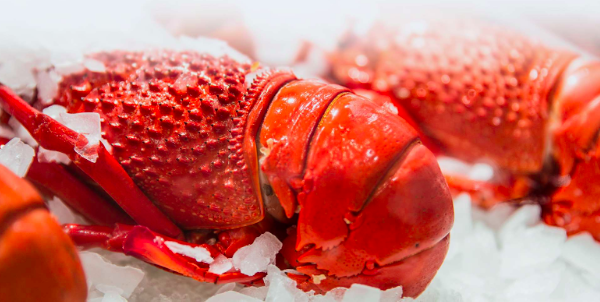Imagine indulging in a vibrant seafood platter, succulent prawns, soft white fish, and sweet scallops, all as fresh as if you’d just hauled them in from the ocean yourself. Maintaining that just-caught freshness when ordering from a seafood wholesale provider can seem daunting. But with the right knowledge and methods, you can ensure your seafood stays fresh and tasty until it reaches your plate.
When it comes to seafood, freshness is a non-negotiable factor. As soon as seafood leaves the ocean, a clock starts ticking. And the challenge of keeping it fresh and palatable begins. This is especially true when purchasing from a seafood wholesale supplier, where the distance and time between the ocean and your plate can vary. But don’t worry! There are various proven strategies to maintain the freshness of your delivered seafood, and we’re here to guide you through them.
Table of Contents
Understanding the Importance of Freshness in Seafood
- The Freshness Factor
Seafood is celebrated for its distinct flavours, aromas, and textures, all hinge on its freshness. Fresh seafood is tastier and healthier, containing high levels of beneficial omega-3 fatty acids, vitamins, and minerals. However, these benefits can rapidly diminish as seafood ages, negatively impacting taste, texture, and nutritional value. Therefore, ensuring the freshness of your delivered seafood should be a top priority.
- The Risks of Unfresh Seafood
Consuming unfresh or spoiled seafood can lead to food poisoning, with symptoms ranging from mild stomach discomfort to severe dehydration. The most common food poisoning associated with seafood is scombroid poisoning, caused by high levels of histamine produced as fish spoils. Hence, keeping your seafood fresh is not just about taste—it’s also about safety.
Maintaining the Freshness of Delivered Seafood
Proper Storage
Upon receiving your seafood delivery, proper storage is crucial. Different types of seafood require different storage methods:
- Shellfish: Store shellfish like clams, mussels, and oysters in a bowl covered with a damp cloth. Avoid airtight containers, as these can suffocate shellfish.
- Fish: Whole fish and fillets should be kept in the coldest part of your fridge, ideally at 0-4°C. You can also place it on a tray with ice for extra cold storage.
- Crustaceans: Crabs, lobsters, and prawns can be kept in a sealed container in the fridge. They can also be stored on ice, but avoid direct contact with freshwater ice as it can degrade their texture.
Fast Consumption
Seafood is best consumed as soon as possible after purchase. Fresh fish, for instance, should ideally be eaten within 24-36 hours. If you can’t consume seafood within this timeframe, consider freezing it. Properly frozen seafood can retain its quality for up to six months.
Recognising Fresh Seafood
Recognising fresh seafood can help you ensure its quality upon delivery. Fresh fish should have clear, shiny eyes, firm flesh that springs back when touched, and a light, clean scent. Shellfish should have tightly closed shells, or if open, should close when tapped. Fresh crustaceans should feel heavy for their size and have a vibrant colour.
Opt for Reputable Suppliers
Remember, your seafood’s freshness starts well before it reaches your door. Choose a reputable seafood wholesale supplier who values quality and proper handling methods. These suppliers often source their seafood sustainably, ensuring that it is caught or farmed in ways that consider the long-term vitality of harvested species and the oceans’ well-being.
Consider Delivery Times and Methods
Opt for suppliers who use fast and efficient delivery methods. Seafood should be kept at cold temperatures during transport to slow down spoilage processes. The quicker the delivery, the fresher your seafood will be upon arrival.
Use Quality Packaging
Your seafood should arrive in high-quality, insulated packaging to maintain optimal temperatures. Some suppliers even include ice packs or dry ice to keep the seafood cool. Suppose your seafood arrives and the packaging is warm, or the seafood could be cooler to the touch. In that case, it’s best to notify your supplier and avoid consuming the product.
Conclusion
Maintaining the freshness of your delivered seafood can seem challenging, but by understanding the importance of freshness, storing your seafood properly, consuming it promptly, and recognising the signs of freshness, you can enjoy the same vibrant flavours as if you were dining by the ocean. Ordering seafood from a wholesale provider doesn’t mean you have to compromise on quality or safety. With these practical strategies, you can enjoy fresh, delicious, and safe seafood in your home.
By implementing these guidelines, you can enjoy the fresh taste of the ocean, even when ordering from a wholesale seafood supplier. Always remember that the freshness of seafood doesn’t just affect the taste—it’s also essential for safety and health. So whether you’re a seafood connoisseur or just dipping your toes into the culinary possibilities of the ocean, these tips will help you maintain the best quality for your seafood. Enjoy the ocean’s bounty confidently, knowing you’re consuming fresh, safe, and sustainably sourced seafood.
Maintaining the freshness of delivered seafood doesn’t have to be a challenge. It can be a simple, manageable process, resulting in delicious and healthy meals for you and your family. Each step can be navigated successfully with the right information and proactive approach, from selecting your seafood to when it’s delivered and consumed.


No Comments